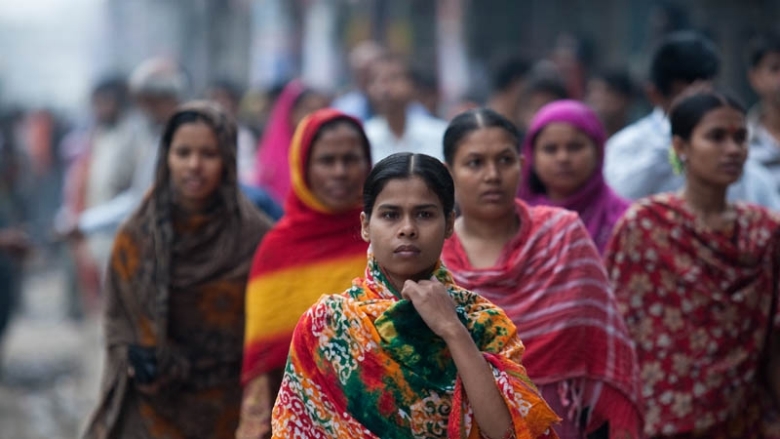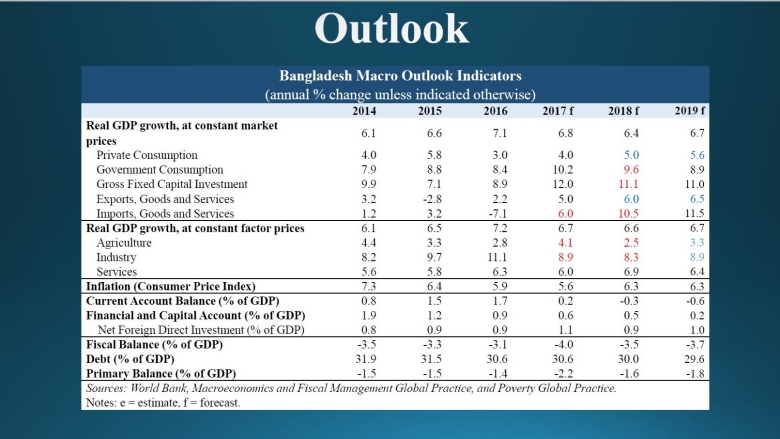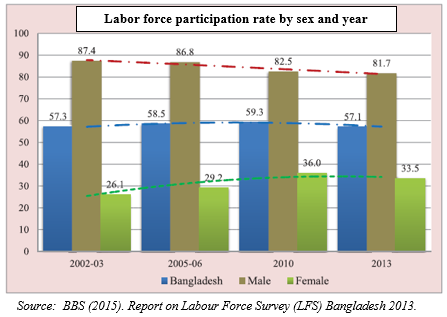Bangladesh’s economic growth remains resilient in spite of volatile export growth and a decline in remittances. A new World Bank report The Bangladesh Development Update May 2017 notes inflation has decelerated benefitting from soft international commodity prices and prudent macroeconomic management. The outlook for Bangladesh’s main export destinations is projected to improve, although downside risks remain elevated.
The economy has done well along with declining poverty rates, but Bangladesh can do even better. To tap its vast growth potential, the country needs to improve infrastructure, reduce the relatively higher cost of doing business, as well as make strategic investments in increasing female labor force participation.
Declining rates in poverty have persisted
Rebound in labor intensive exports, decline in food inflation, and rise in wages is likely to have contributed to continued gains in poverty reduction in FY16. However, slowing exports, falling remittances, rising food inflation and early floods may slow the pace of poverty reduction.
Growth is stable
Indicators such as tax revenue growth (19.6 percent) and growth in import of construction materials (13.6 percent) point that the economy is well on course to maintaining robust growth. The US and Europe, Bangladesh’s largest export markets, as well as private investments are projected to improve in 2017. Macro-economy is stable, but exchange rate, revenue mobilization and liquidity management face challenges.
Bangladesh’s ranking of 176th out of 190 countries in Doing Business 2017 and 107th out of 140 in the Global Competitiveness Index 2016, one of the lowest in South Asia underscores the need for improving investment and business environment. High levels of non-performing loans make the state-owned banks vulnerable to financial stress.
The growth outlook in the near to medium-term is robust
The economy is likely to grow between 6.4% to 6.8% in 2017 and 2018. However, the country must not be too complacent as it would require to deal with domestic and external risks. Risks on the domestic side include further deterioration in financial sector stability, slippages in addressing fiscal reforms, and political uncertainties in the run up to elections in 2019.
Bangladesh needs higher growth rate to accelerate its journey on the middle income path. The country will need an investment-led strategy coupled with improvements in the efficiency of public capital. Achieving higher than 7 percent annual growth on a sustained basis will inevitably require increased productivity growth as well as much higher female labor force participation.



